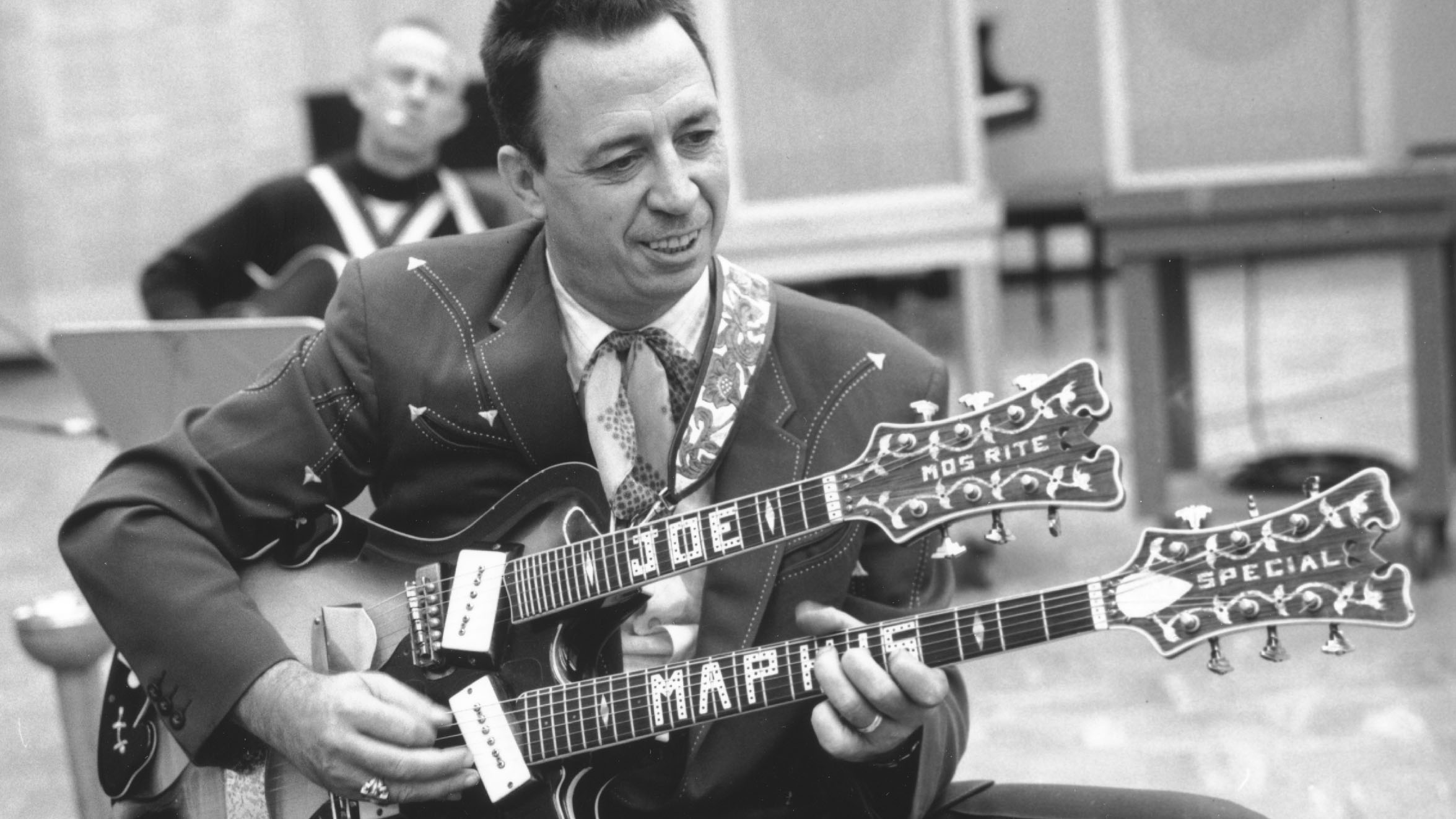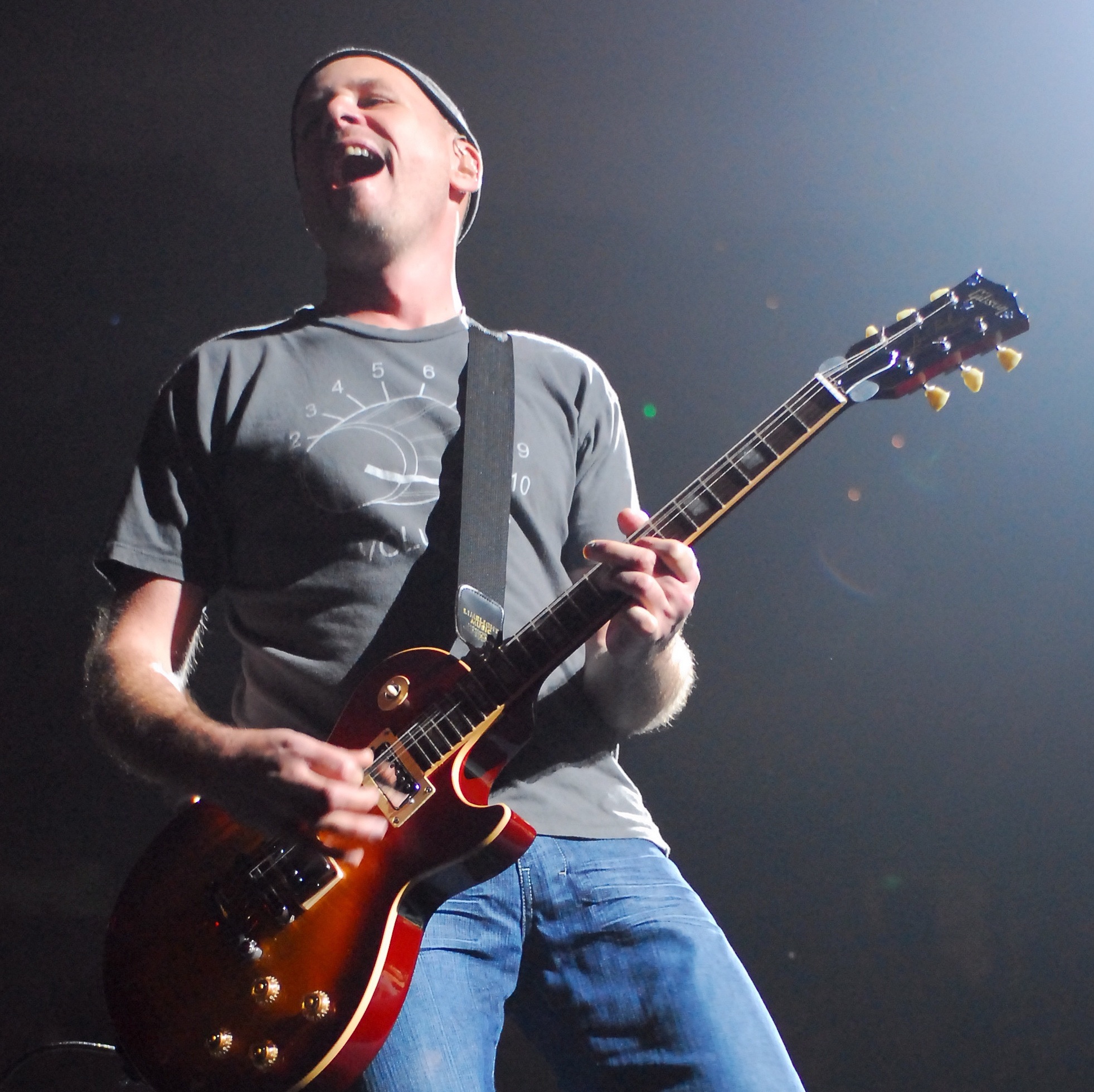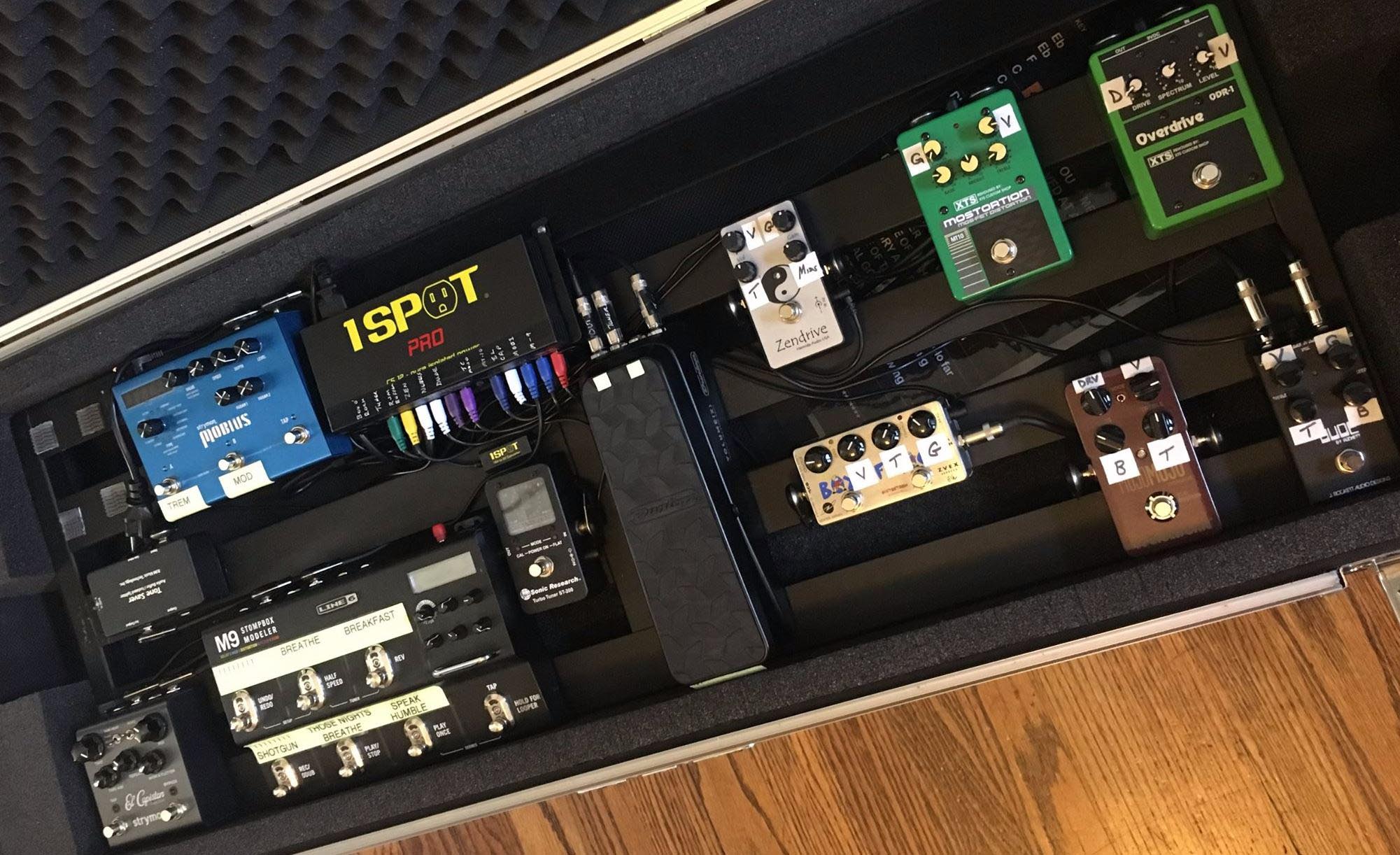Nashville session guitar king Jerry McPherson: “Instead of trying to make yourself look good, you need to make the song look good”
Vince Gill, Faith Hill and Tim McGraw guitarist reveals live and studio secrets

If you’re looking for session guitarist supreme Jerry McPherson online, good luck. He has no website, no business page, and no desire to tweet. But that doesn’t mean you won’t find him on Facebook.
The instrumental music that accompanies the site's timelines and slideshows? That’s McPherson on guitar - one of countless projects on which he has played.
“There’s quite a talent pool that’s putting together music for Facebook,” he says. “That’s been a lot of fun: to be a part of music that has no bounds, and it’s one of those things that I didn’t see coming.”
McPherson was born in Dallas, Texas, where he grew up playing guitar in garage bands and immersing himself in Peter Gabriel-era Genesis and David Bowie. By the time he enrolled at Baylor University, in Waco, he was an experienced studio musician.
A Nashville resident since 1986, McPherson is on the A-list of session players
As a student, he commuted to recording sessions in Houston, where he relocated after earning his degree. There, he connected with a member of Christian artist Amy Grant’s band, which led to a touring position as her guitarist, a role he filled for 19 years, followed by similar slots with Vince Gill, Reba McEntire, Faith Hill, and Tim McGraw.
A Nashville resident since 1986, McPherson is on the A-list of session players. His resume reads like a who’s who of country, pop, rock, and Christian artists. He’s an ACM-nominated guitarist, and can be heard on chart-topping hits such as Kelly Clarkson’s Catch My Breath, and Lee Brice’s I Drive Your Truck, joined on both by his son, Miles, the 2017 ACM Drummer of the Year and touring drummer for Clarkson and Paramore.
His last stretch of dates came in 2012, playing behind Tim McGraw and Faith Hill in Australia. Since then, he has remained close to home, tracking sessions from morning into night.
Get the MusicRadar Newsletter
Want all the hottest music and gear news, reviews, deals, features and more, direct to your inbox? Sign up here.
All of that changed in October 2017, when McGraw and Hill needed a guitarist to complete the final 20 dates of their 80-city Soul2Soul arena tour.
When MusicRadar spoke to Jerry McPherson, he and Miles had just wrapped up sessions with Journey keyboardist Jonathan Cain. He offered some insight about life on the road and as a studio musician, and what it takes to be proficient at both.
Let’s begin by looking at some of the criteria of session work.

“Session work started out where you would read the written notation and make it have emotion, make it sound not like you were reading, but that you were coming up with it off the top of your head. Now you need to be able to self-produce, self-arrange, and self-edit.
“Self-arranging: you come up with parts that work within the melody, where you’re not in the way of the artist. Self-producing: you give yourself direction. Producers here don’t micromanage you. They turn you loose and then direct you, once they hear what you’re doing. So you’re trying to be the right guy for the song, and other times you try to add emotional value with something out of left field that no one else would have thought of.
“Self-editing: You’re constantly thinking, ‘How can I chop away from this part that I’m playing? What can I leave out so the song will breathe?’ Those are essential things for session work: self-arranging, self-producing, self-editing.”
Where do new players go wrong?
Being able to shred is not an asset in the studio, unless you’re making instrumental shred albums
“They work on the wrong things. Their goal, in order to make it in session work, is to make themselves look good, so they work on flashy stuff, whether it’s flashy gear or flashy technique. The problem is that instead of trying to make yourself look good, you need to make the song look good.
“Being able to shred is not an asset in the studio, unless you’re making instrumental shred albums. For pop, rock, and country here in town, guys will learn how to run, but they never learn how to walk, and most of the time we’re walking.”
When we last spoke, touring was in your past. What convinced you to go out again, and what was it like to go back?
“I filled in for one of their guitar players, David Levita, who had to drop out for a bit. I had to learn 27 songs, walk out onstage without a rehearsal, and play a show.
“I did get to see the show in Nashville right before I started with them, to get a lay of the land. I felt fortunate to get an audience view of it, because once you get onstage, you’ve got the worst seat in the house. You don’t see the lighting, you don’t hear the PA, you don’t see the video screens. You’re so close that you’re too close.
“From the aspect of being on the road, I was looking forward to the challenge of learning the songs and the parts. I had played some of them before, but they were totally different arrangements, different guitar parts, everything was different. So I had to unlearn quite a bit.”
How much time did you have to prepare?
“I had several weeks, so I didn’t have to do any speed-reading. Sometimes you find out you’re going to do a tour, it’s a last-minute call, and you have to do charts because it’s so much material.
“I was able to learn the songs without ever looking at or making a chart. It was just me and my guitar. There was no way that I was going to start on a chart, because once you start, you’re glued to it for a long, long time. It’s very hard to get away from it.”

What was the process of unlearning and relearning?
“When you’ve toured the songs, your muscle memory and your ear will take you down different roads. It almost made it a little harder in that I had to fight my natural instincts of what I used to do. But because they gave me enough time, I was able to relearn the muscle memory of playing through these songs.
“They hired Adam Blackstone, who is a bass player and the musical director for Justin Timberlake and Nicki Minaj, to weave some of these songs together and come up with different feels. For example, Faith Hill’s Breathe: before, I played it fingerpicking on acoustic guitar. That’s how it would start. But it moved over into more of an R&B feel, and it starts on a Fender Rhodes with some ambient stuff around it. That wasn’t too hard, because I wasn’t on acoustic and trying to learn a different part.
“But some of the songs had different intros, and they were different form-wise, because they were trying to fit a ton of songs into a set, so they had to severely shorten some of them. Otherwise it would have been a three-hour show.
“The last time I played Real Good Man was when I toured with Tim in Australia, so it was pretty much like the record. But over the last few years, they had come up with a bunch of different ideas and they were all stuck in that song. It was a lick-fest.
“It was a completely different arrangement, and it’s really good live, but it took a while to learn and get the muscle memory down, because you’re basically doubling the other guitarist. It took a good chunk of time to learn all the licks.”
What was in your rig?
“My main goal was to slide into that spot with the least amount of change possible, because they had gotten very used to David Levita. Monitor mixes can be critical when you have so many things happening onstage that when you change one element, there’s an upheaval for everything else. So David and I talked.
“I used a Matchless amp that he had out on the road. I’m familiar with Matchless - the last time I was on the road with Tim and Faith, I used a Matchless. David had a Vox AC30 and a Matchless, so I went with a Matchless. I had a short soundcheck, and they were able to get a level out front because it was a familiar sound on the monitors.
“I had four guitars - two guitars and two backups. I took a Hi9 guitar that I’d just had built for the tour. There’s a repair and custom shop here in town called Glaser Instruments, and they are one of the top national places to work on gear and do custom stuff. A guy that works there named Nick Drushel started Hi9.
“We put our heads together to figure out the right pickup configuration for the songs I’d be playing on the tour, and he built that guitar for me. It has two Seymour Duncan P-90s. We started to use hum-cancelling P-90s, but it sounded better to leave them in the ‘hum-welcoming’ wiring, and I didn’t have any problem with hum while I was out. That was my main guitar, and it was in standard tuning.
“I also had a Fender Telecaster that I played on six songs. I didn’t take one of my vintage Teles. A few years ago, Fender had a ‘Telebration’, celebrating the 60th anniversary of the Telecaster. Every month they came out with a different model of Telecaster. I have the ’62 Telecaster, and it’s a great guitar. I have an Evertune bridge on that and had it down a half-step.

“On the pedalboard, I had the usual suspects: a Nobels Overdrive, a Strymon Mobius for modulation stuff, and an Ibanez Mostortion. Those pedals were made in the ’90s and sadly discontinued. Every pedalboard I have has those two [Nobels and Ibanez] pedals on it.
“I used a J. Rockett, The Dude, for both rhythm and lead, also for lead I used a Zendrive, and I used a Strymon El Capistan for delays.
“I also had a Line 6 M9. There were specific songs where you have to have tempo delay going, so I would set up the M9 because I could save the settings. I used my favorite tuner, a Sonic Research. The best. I powered all of it with a 1Spot Pro, which is probably my favorite power supply I’ve ever purchased. It was very simple: I needed distortions, overdrives, a little bit of modulation, and different delays.”
How did you keep your sound consistent?
“Typically, if there’s something wrong in my monitor mix, I don’t say anything unless it’s show-stopping. If something’s off, I always wait and see if it happens during the next two or three shows, because stuff always changes.
Everyone is so pro at that level, from the guitar techs to the guys that supply the power, to the guys that supply the wireless frequencies, front of house, your monitor engineer - they’ve got your back, and they will hear stuff before you hear it
“If you chase your monitor mix every soundcheck, you will be chasing your monitor mix every soundcheck. Once you change it, you probably should have kept it in the same spot, because the next night it will magically be back where it was. The stuff just changes.
“The last time I toured with Tim and Faith, our front-of-house guy was front of house for Paul McCartney and AC/DC, so if my stuff was sounding a little odd in my ears, rather than change it, I would see Pab [Paul Boothroyd] and say, ‘My guitar was sounding this way to me tonight. Were you finding that? Is there anything I can do?’ We may try re-mic'ing the cabinet, moving the cone over, moving the mic over the cone a little bit to darken it or brighten it up a little bit.
“It’s nice to have people on that level you can trust. If they think something needs to be changed or doesn’t need to be changed, they don’t do it just to do it. Everyone is so pro at that level, from the guitar techs to the guys that supply the power, to the guys that supply the wireless frequencies, front of house, your monitor engineer - they’ve got your back, and they will hear stuff before you hear it.”
Where can we hear some of your recent work?
“I played on Cheap Trick’s Christmas album [Christmas Christmas], and I tracked with Chris Isaak, with Dave Cobb producing. He’s a wonderful guy, and a totally different way of working.”
How so?
“No click, a lot of times no count-offs, most of the time no charts, a lot of times we wore headphones, but there were times when we didn’t need them because you’re literally all just about arm’s length from each other. If a song started on acoustic - and he was playing acoustic on a lot of the stuff - he would start playing and you would just fall in.
When the singer is singing next to the acoustic guitarist and you realise, ‘I’m going to have to go for it on this’, it puts all the spotlight and all the emphasis on the playing
“You didn’t really hear from the control room. The engineer would do his hand in a circle or whatever to say, ‘I’m rolling; any time you want to start.’ And on keyboards was Pig Robbins, who is probably 80 years old, and he’s a legend. Dave brought him in to play piano.
“We were all tracking live, and because there’s no click, it was really weird. There was a section that Dave said, ‘We got that take, but there’s one section I’d like to make a work piece of that I may edit in.’ We would play that section with no click and hope to God we got it close to what the other tempo was. And somehow it all works.
“He’s an organic, brilliant producer. It’s the most unusual experience you’ll ever have in the studio, and it’s one where the music is larger than the process, which I think gives artists a real sense of importance that they may have not felt.
“I’m sure some artists come in and feel small to the process, but when the singer is singing next to the acoustic guitarist and you realise, ‘I’m going to have to go for it on this’, it puts all the spotlight and all the emphasis on the playing, the singing, and the sound, of course, but the studio is so secondary to what’s going on. It was an eye-opening thing. It wouldn’t work for everything, but when it works, believe me, it works.
You work in country, Christian, rock, and pop music, and your background includes orchestral music from your parents’ record collection. How did you develop your guitar sound?
“I’ve never done drugs, so music was my drug. I would put on a pair of headphones, listen to Genesis records, crank it up loud, and go down this wormhole that I guess other people use drugs for, but I would do it through art-rock music.
“I’ve always been drawn to those kinds of sounds and the orchestral side of things, so I was looking for something that would create this landscape. Not just a Tele going through a Fender amp, but a little bit of delay, a little bit of reverb, maybe some fuzz in there occasionally.
“I think my strength, when it comes to getting sounds, is that I envision it in my head first, and then I try to use the gear around it to get there, because if I look at the gear and let it determine what the sounds are going to be, it’s never as good. It’s always having that vision of, ‘Ooh, I want the sound of ‘whatever’,’ and then going for that.
Do you always get it?
“No, but the nice thing is that when you have this vision of something you’re aiming for, and you start trying to dial stuff in, it’ll take you down another path. You’ll end up going, “I had this vision for a sound, but I ended up coming up with something as an accident that I like even better than my original vision.”
“Its mission is simple: unleash the power of any amplifier or line-level source without compromise”: Two Notes promises a “watershed” in tube amp control with the Torpedo Reload II
MusicRadar deals of the week: Enjoy a mind-blowing $600 off a full-fat Gibson Les Paul, £500 off Kirk Hammett's Epiphone Greeny, and so much more









